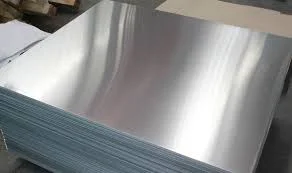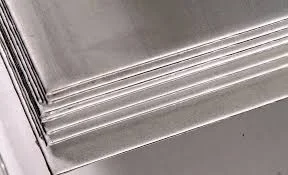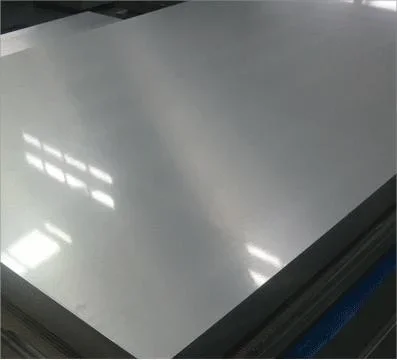Stainless steel is a versatile and widely used material in various industries due to its durability, corrosion resistance, and aesthetic appeal. Stainless steel plates are essential components in construction, automotive, aerospace, and many other sectors. In this blog, we will delve into the manufacturing process of stainless steel plates, exploring the steps involved in turning raw materials into high-quality finished products.
Introduction to Stainless Steel Plates
Stainless steel plates are flat, thin pieces of stainless steel that are used in a wide range of applications, from kitchenware to industrial equipment. These plates are manufactured through a series of processes that involve shaping, cutting, and finishing the stainless steel material. The quality and properties of the stainless steel plate depend on the manufacturing process used and the specific requirements of the end-use application.

Raw Materials and Melting
The manufacturing process of stainless steel plates begins with the selection of raw materials. Stainless steel is primarily made from iron ore, chromium, nickel, and other alloying elements. These raw materials are carefully measured and mixed in precise proportions to achieve the desired grade of stainless steel. The mixed materials are then melted in a furnace at high temperatures to form a molten metal.
Casting and Solidification
Once the stainless steel has been melted, it is poured into molds to form large slabs or billets. This process, known as casting, allows the molten metal to take the shape of the mold and solidify into a solid form. The casting process is crucial in determining the size and shape of the stainless steel plate that will be produced.
Hot Rolling
After solidification, the stainless steel slabs or billets go through a series of rolling processes to reduce their thickness and shape them into flat plates. The hot rolling process involves passing the stainless steel through a series of rollers at high temperatures to achieve the desired dimensions and surface finish. Hot rolling helps to improve the mechanical properties of the stainless steel plate, making it stronger and more ductile.
Annealing and Pickling
Following hot rolling, the stainless steel plates undergo annealing, a heat treatment process that helps to relieve internal stresses and improve the material's mechanical properties. Annealing also enhances the corrosion resistance of the stainless steel plate. After annealing, the plates are pickled in acid solutions to remove any surface impurities and oxides, leaving behind a clean and smooth surface.

Cold Rolling
Once the stainless steel plates have been annealed and pickled, they may undergo cold rolling to further reduce their thickness and improve their surface finish. Cold rolling involves passing the stainless steel through a series of rollers at room temperature to achieve the desired thickness and dimensional accuracy. Cold rolling also enhances the surface smoothness and flatness of the stainless steel plate.
Cutting and Finishing
After cold rolling, the stainless steel plates are cut to the required size and shape using shearing or laser cutting techniques. The cut plates may then undergo additional finishing processes, such as grinding, polishing, or coating, to achieve the desired surface texture and appearance. The finished stainless steel plates are inspected for quality and consistency before being packaged and shipped to customers.
Applications of Stainless Steel Plates
Stainless steel plates find applications in a wide range of industries due to their excellent properties and versatility. These plates are used in the construction of buildings, bridges, and infrastructure projects, as well as in the manufacturing of kitchen appliances, automotive components, and aerospace structures. The corrosion resistance, strength, and aesthetic appeal of stainless steel plates make them a popular choice in various industrial applications.

Conclusion
The manufacturing process of stainless steel plates involves a series of steps, from melting and casting to hot rolling, annealing, and finishing. Each stage of the process plays a crucial role in shaping the stainless steel material into high-quality plates that meet the requirements of specific applications. Understanding the manufacturing process of stainless steel plates helps us appreciate the craftsmanship and technology involved in producing these essential components used in diverse industries.
Common Uses of Stainless Steel Plate in the Construction Industry
